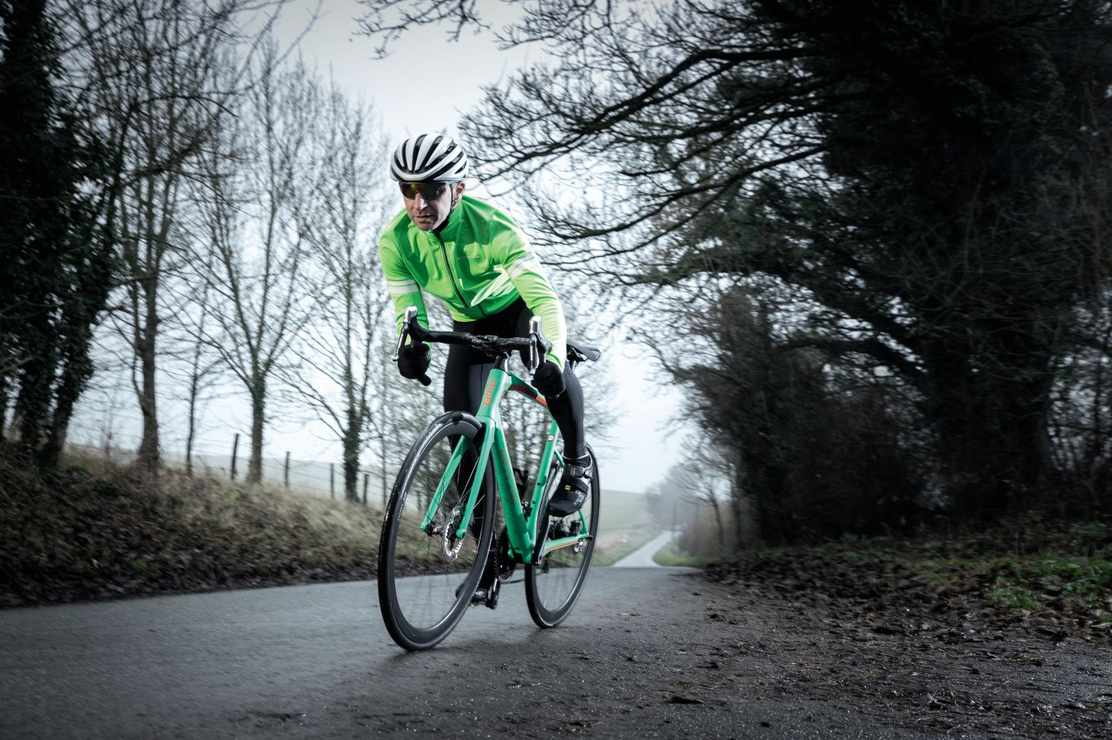Italian tubing and component master Dedacciai has a knack of simplifying complexity. Generally known by the Deda abbreviation, the company’s innovative products, particularly its handlebars and stems, are a lesson in classy quality.
With the Trentacinque oversized cockpit proving that light weight, rigidity and comfort can coexist, the Superzero aluminium bar aims to offer the advantages of its £199.99 carbon forebear at a far lower price.
Labelled as 440mm wide, measured from its outside edges, my Superzero bar is 415mm from centre to centre, and weighs 326g. Deda uses an innovative mechanical forming process to form high quality 7050 aluminium into an aero shape that’s identical to the carbon model.
The broad tops make for a comfortable hand hold, and the RHM drop is one of my favourites
The drops are in Deda’s Rapid Hand Movement (RHM) design; a shallow, compact drop with an ergonomic and flowing shape that allows a range of comfortable positions for all hand sizes. The central round portion of the tops is 31.7mm in diameter, enlarging to a teardrop shape that tapers in depth and width towards the gentle bend. Their additional width in the bends creates useful support for your palms when resting on the hoods.
Internal cable routing is minimal, with two 13mm diameter holes per side drilled 78mm apart within small depressions on the underside of the bar. The openings aren’t really angled, so the cables do create small bulges where they enter and exit the bar, but if taped with cushioned tape, they’re hardly noticeable.
Guiding the inner cables through needs some patience, and you’ll want to feed the outer casing in from the longer end, whether checking length or finally fitting, as the aluminium hole edges, although filed smooth, do shave off some of the casing.
For the same reason, it pays to ensure the casing entering near the stem is securely taped in place to prevent abrasion from normal bar movement. Alternatively, you could route the cables externally, although that would alter the bar’s teardrop profile. Electronic shifting users are less affected.
The Superzero stem’s trapezoid shape is an inverted triangle that increases in diameter before meeting the bar, which is held by a two-part clamp with two 4mm chromoly steel hex bolts on each vertical element. It’s 3D forged from AL2014 alloy, and my 110mm, 82-degree example weighs 146g with all the hardware.
While the stem is an average weight for its price, the bar is heavier than many, but all that additional aero surface area has to come at a small cost. Their combined performance compensates, as those extra grams ensure superb torsional stiffness whether sprinting or climbing, helping steering precision.
The broad tops make for a comfortable hand hold, and the RHM drop is one of my favourites. High frequency road buzz and big hits are muted too, making this cheaper Superzero a great performing, comfortable aero option.
- Bar: £92 / £TBC / AU$159
- Stem: £76 / £TBC / AU$129
